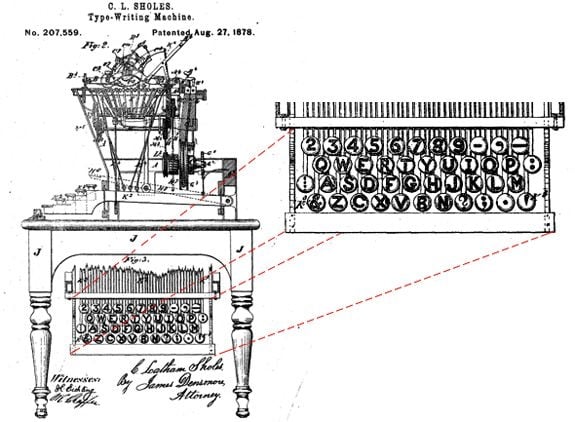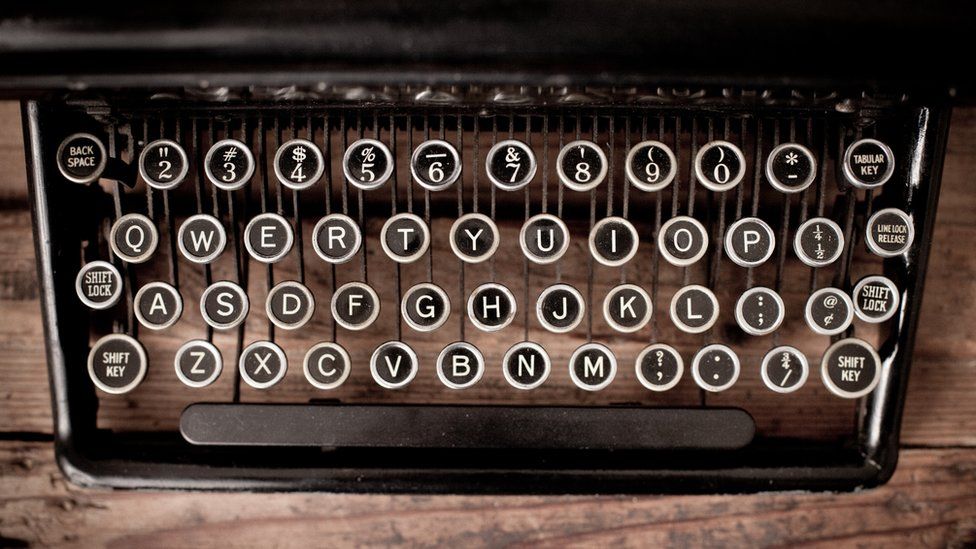A Brief History of Keyboard Evolution: From typewriters to computer terminals
57
Typewriters to Computer Terminals
The history of keyboards can be traced back to the early days of typewriters and has evolved significantly over the years. Here's a brief overview of the key developments in the history of keyboards: Early Typewriters (1870s): The first commercially successful typewriter, the Sholes and Glidden typewriter, also known as the Remington No. 1, was introduced in 1874. It featured a QWERTY keyboard layout, which became the standard for typewriters and later computer keyboards. Telegraph and Telegraphic Typewriters (late 1800s): Before the typewriter, there were early attempts at creating devices with keyboards for sending telegraph messages. These devices, such as the telegraphic typewriter invented by Royal Earl House in the 1840s, laid the groundwork for the development of keyboard technology. QWERTY Layout Standardization (late 1800s): Christopher Latham Sholes, one of the inventors of the typewriter, designed the QWERTY keyboard layout to prevent jamming issues on early typewriters. Despite criticisms and alternative layouts, QWERTY became the dominant standard. Electric Typewriters (late 1800s to mid-1900s): The transition from manual to electric typewriters brought about improvements in typing speed and efficiency. Electric typewriters featured keyboards similar to their manual counterparts. Mainframe Computer Terminals (1950s-1960s): With the advent of computers, early input devices resembled typewriter keyboards. Mainframe computer terminals used teletype machines, which incorporated keyboards for data entry. Personal Computers (1970s-1980s): The development of personal computers in the 1970s and 1980s brought about variations in keyboard design. The IBM PC, introduced in 1981, played a crucial role in popularizing the 101-key enhanced layout, which is still widely used today. Mechanical Keyboards (1980s-present): Mechanical keyboards, known for their tactile feedback and durability, gained popularity in the 1980s. They use individual mechanical switches for each key, providing a distinct feel and sound. Despite the rise of membrane keyboards, mechanical keyboards have maintained a dedicated following among enthusiasts. Introduction of Additional Keys (1990s-present): Modern keyboards include additional keys, such as function keys, multimedia keys, and navigation keys. The Windows key, introduced by Microsoft in the 1990s, became a standard feature. Wireless Keyboards (2000s-present): Advancements in wireless technology led to the development of wireless keyboards, which use Bluetooth or other wireless protocols to connect to computers and other devices. Ergonomic Keyboards (2000s-present): To address concerns about typing-related injuries and discomfort, ergonomic keyboards with alternative layouts and designs were introduced to promote more natural hand positions. Virtual Keyboards and Touchscreens (2000s-present): The rise of smartphones and tablets brought about virtual keyboards on touchscreens, changing the landscape of input methods. These devices often use on-screen keyboards for text input. The history of keyboards reflects the evolution of technology and the changing needs of users, from the early mechanical typewriters to the diverse array of keyboards available today.

The dominance of the QWERTY keyboard layout can be attributed to a combination of historical, technological, and practical factors. Here are some key reasons why QWERTY became so dominant:
Early Adoption and Standardization: The QWERTY layout was one of the earliest keyboard layouts to gain widespread adoption. The success of the Remington No. 1 typewriter, which featured the QWERTY layout, contributed to the establishment of QWERTY as a standard. Once a particular layout gains momentum and becomes widely adopted, it creates a network effect where users are more likely to stick with what they are familiar with. Typewriter Design and Jam Prevention: The QWERTY layout was designed by Christopher Latham Sholes to address the issue of jamming in early typewriters. By strategically placing commonly used letters apart from each other, Sholes aimed to reduce the likelihood of adjacent keys jamming when pressed in quick succession. This design feature helped in the practical use of typewriters, and the QWERTY layout became associated with typewriting efficiency. Licensing and Patents: The Remington Company, which produced the Remington No. 1, held patents on the QWERTY keyboard layout. This granted them a competitive advantage and allowed them to control the use of this layout. Other typewriter manufacturers had to either license the QWERTY layout or develop their own alternatives. This further solidified QWERTY's dominance in the market. User Familiarity and Training: As typewriters became more widely used, users became accustomed to the QWERTY layout. Typing schools and training programs were established to teach individuals how to type efficiently using the QWERTY keyboard. The existing user base and training infrastructure made it challenging for alternative layouts to gain traction. Economic Factors: The QWERTY layout had already established a dominant position in the market by the time computers started to become widespread. As personal computers emerged, compatibility with existing typists' skills and muscle memory became a significant factor. Manufacturers opted for the QWERTY layout to ensure a smooth transition for users. Path Dependence: Path dependence refers to the idea that the outcome of a historical process depends on the sequence of events leading up to it. Once a particular technology or standard gains momentum, it becomes increasingly difficult to change or replace it. In the case of QWERTY, its early adoption, standardization, and user familiarity created a path-dependent scenario that favored its continued dominance.

While there have been efforts to promote alternative keyboard layouts for improved efficiency, the network effect, user habits, and the entrenched position of QWERTY have made it challenging for alternatives to gain widespread acceptance. Despite its historical roots and the availability of more optimized layouts, the QWERTY keyboard remains the standard for most typing devices.
https://www.thoughtco.com/history-of-the-computer-keyboard-1991402














![[LIVE] Engage2Earn: auspol follower rush](https://cdn.bulbapp.io/frontend/images/c1a761de-5ce9-4e9b-b5b3-dc009e60bfa8/1)



























